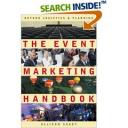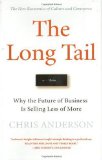Sincerity: The Friendly Ghost Stops By
In the meantime, I pinged The Friendly Ghost about my post on sincerity’s role in social media:
“I equate sincerity with authenticity. As a writer I cannot but help put some of myself into what I write, and generally I find people respond to that. When I go through even my own postings on my blog, I find the first tentative posts quite dull. it wasn’t until I gained confidence as a blogger – finding my blogging ‘voice’ – that it started to come alive. I also find that the more open I am in other written communications, and the more of my personality I use – in emails, internal documents, even the material I write for clients – I generally get a better response because people know there’s a real person behind it.
Sometimes however it can be difficult to get across fine judgements. So much of our communication is visual and auditory that facial expressions and tonal inflections can totally change the meaning of a sentence compared to seeing it written down. This means you need to be precise with your writing as well as free-flowing. This particularly is part of the copywriter’s skill but anyone can do it: you just have to make sure you re-read what you’ve written and actually say it to yourself in your head. Make sure you don’t say anything that can be misinterpreted. But, by the same token, make sure you’re being honest.”
The New Era of Reputation Management
My friend and former colleague, Teena, recently commented on her blog, And then….there’s that, about reputation management.This got me thinking about how people and corporations have to manage their images, profiles and reputation in this increased scrutiny of citizen journalism and access to information.
First, it was how much information you wanted to give out for free email programs like Rocketmail and Hotmail mail (am I dating myself here?). Frankly, I put in fake information because I wasn’t sure how my information would be used.
Then it was posting to electronic bulletin boards and email newsletters. At the time, posting was relatively safe, being seen and commented by that specific community. The speed of information transfer wasn’t as easily dispersed through blogs and search engines were just beginning to leverage powerful alogortithms for revealing even the minute detail about you.
With the advent of Google, a person’s postings or online commments could be more easily found. But as PR professionals, we had the ability or time to manage prospective fallout and marketers could still control the message.
Now, blogs, twitter, instant messaging and other real time communications technology enable information – both good and bad – to spread very quickly. We now have hours maybe minutes to respond to what is being said online.
Blogging, Facebook, LinkedIn and now people search engines provide us an ability to portray our personalities online. But instead of managing one profile, how do you manage several? A personal profile may convey something that you don’t want to present professionally and vice versa. Your reputation can be managed by you but people can make their opinions about what that means.
My blog is where I put most of my effort. It allows me to communicate mythoughts on PR and marketing, while transmitting part of my personality. I point my personal email and online profiles to my blog.
Managing an online reputation requires time. In this more transparent world, it’simportant to manage your reputation. You don’t have to create multiple profiles, just one and point back. And from a marketing perspective, your prospective customers/prospects will have insight on who you are before engaging with you.
It’s just marketing 101. If you don’t do it, someone else will.
Resource: When I was with Niehaus Ryan Wong in 1996-1998, I read an article called “A Brand Called You” in Fast Company by Tom Peters. It is the best article that I recommend for everyone.
Sincerity: Paul Dunay’s Response
Since writing my post on “Where does sincerity fit in?”, I posed this question to a few bloggers to get their perspective on sincerity. Here is a response from Paul Dunay, author of Buzz Marketing for Technology:
Web 2.0 is all about creating transparency in your organization blogs, podcasts, videocasts, wikis, participating in social networks all give you a new view into a company and its employees.
The very next level down is – Is this person/company being authentic in their communications – meaning is someone writing this for them and they are just posting it or is it real? Then there is a fine line between authentic and sincere. I think (as you said) you can be transparent and completely authentic but not sincere. I think a great example of all three was the apology from Southwest airlines on their blog when they had a system outage that stranded many travelers. The blog gave them a transparent platform into their organization, the apology was authentic from the CEO and what was written was absolutely sincere in feeling.
Social Media: Where Does Sincerity Fit in?
 I’ve read a lot about transparency and authenticity being key in this increasingly open and social world. I started wondering how sincerity fits into the picture.
I’ve read a lot about transparency and authenticity being key in this increasingly open and social world. I started wondering how sincerity fits into the picture.
The assumption is that transparency and authenticity will automatically equate to sincerity, but this may not always be the case. The challenge that we have as marketers and PR practioners is how we are perceived by our target audiences – customers, analysts, media and bloggers.
With text based communications, sincerity is difficult to communicate. In fact, Fast Company had a tidbit about a how people interprete emails in their story about “There’s a Message in Every Email.” Punctuation, emoticons and other factors impact how your email is received and perceived by the recipient.
You could be completely transparent and authentic, but not truly speaking sincerely. Or truly sincere but perceived otherwise. How can you differentiate one from the other? I think that social media, when used properly, provides us an opportunity to be sincere in a more “natural” environment.
Why? Because the formality of email pitching gives way to the profile, pictures and personality portrayed in our LinkedIn or Facebook pages. Woul there be value in including links to our profiles when contacting bloggers and media? Possibly because face-to-face contact was previously required to achieve a level of familiarity. Now social media is helping to shape how our target audiences perceive us. If those profiles were contrived for other purposes, it would be very obvious. The sincerity factor would disappear.
I caution that the issue isn’t to pitch or promote your product/service at every opportunity – though sincere, it lacks authenticity. I believe that along with participation, transparency, and authenticity, sincerity is an important element of marketing and PR.
What do you think?
Press Coverage: Impact on Website Traffic?
 While I was at an agency, I had managed the Mindjet account for a few months. One time, our client had mentioned the precise number of hits that Mindjet received after an article was published.
While I was at an agency, I had managed the Mindjet account for a few months. One time, our client had mentioned the precise number of hits that Mindjet received after an article was published.
I had previously mentioned how you can use customized links or URL redirects to track traffic to a particular page. Though this method has its benefits, it can be labor intensive.So I was intrigued by his ability to track clicks. Going in-house provided this enlightenment. It was website analytics.
Whether you use free services like Google Analytics (Disclosure: I use this at work and for other personal sites) or pay for the service, you’re able to see which sites referred traffic to your sites, the number and when. You can even get information about how long a viewer perused your website and the number of pageviews. I believe this information can augment other measurement commonly used.
For example, by reviewing the top 50 sites that referred traffic to our website, I can see which media outlets were contributing traffic. I was surprised to learn that one blog consistently drove clicks to our website on a daily basis while an article on MarketingSherpa or MarketingProfs provided temporary spikes after the coverage.
Let’s be clear I haven’t determined if these are unique or repeat visitors or if these visitors translated into sales leads but it’s interesting nonetheless. If I worked with an agency who gained my trust, I would definitely provide them access to this information.
Now how to tie Google goal conversions into this…
PR and Blogging Outreach: Practical Tips
 In my first guest post on Tom Pick’s WebMarketCentral Blog I looked at the macro issues of PR and blogging. That post primarily focused on the macro issues impacting the quality of outreach – both traditional media and blogging.
In my first guest post on Tom Pick’s WebMarketCentral Blog I looked at the macro issues of PR and blogging. That post primarily focused on the macro issues impacting the quality of outreach – both traditional media and blogging.
Since that original post, your can read my follow up guest post that highlights my 8 Tips About Blogging Outreach. To me, good blogger relationships is one part doing your research, one part old school PR and one part transparency. Some additional resources on this topic include:
1. Erik Sebellin-Ross’ Tech for PR: Erik has included a page on Social Media Basics and his tips for blogging.
2. The Friendly Ghost’s post on Ghost Blogging: when the chips are down the balloon goes up and the lights go on. Discusses if ghost-writing a blog is advisable
3. Lifehacker’s guide to weblog comments. Great points about the do’s and don’ts of blog commenting.
4. Micro Persuasion: Steve Rubel started a lively conversation with his post on The Future of PR is Participation: Not Pitching Can PR go beyond pitching and understand how to leverage social media?
5. B.L. Ochman included her MaketingSherpa article on How to Pitch Me – and Other Bloggers – with PR on her blog
6. Lee Odden’s Online Marketing Blog discusses How NOT to pitch a blogger
7. Update: Sept. 4, 6:25 pm PST: In the August 27 PR Week, Renee Blodgett of Blodgett Communications was quoted, “Most start ups know to use blogs to clarify information about their brand and to correct inaccuracies. The PR industry should not be intimidated by ths medium that is really an extension of basic PR strategy.” Um – maybe they just need to now how to reach out to bloggers…
8. Update: Sept. 5, 6:01 pm PST: Paul Stamatiou includes his Checklist for Public Relations People. How many more people are going to include spell the name correctly I wonder?
9. Update: Sept. 10, 1:32 pm PST: Jeremiah Owyang of “Web Strategy by Jeremiah” provides his throught on this topic in his post on “How PR professionals should pitch bloggers.” Jeremiah states, “Always remember that I’m thinking of my readers first, so if the content is not going to help them, I’m not going to point to it –think backwards.”As I read all of these articles, it’s amazing that there are common threads throughout. Let’s see if my fellow colleagues can truly heed the advice that these handful of bloggers provide.
10. Update: Sept. 12, 9:59 am PST: Wow, the postings just keep on coming. This one is from Rohit Bhargava of Influential Marketing Blog. This posting is from the Ogilvy Digital team and is “[their] first stab at creating something transparent that could rebuild some credibility in the eyes of bloggers who have had to hear too many clueless pitches from inexperienced PR and marketing folks.” Check out The Ogilvy Blogger Outreach Code of Ethics (Beta Version). And why is everything a beta now?
Event Marketing: Five Ways that PR Enhances Events
 The early part of my career was focused on securing speaking opportunities for my clients. In the beginning, speakingopportunities was considered the step child of PR – something you had to include in the program but activity was (and to some degree is) relegated to the end of the month when you had to show progress to the client.
The early part of my career was focused on securing speaking opportunities for my clients. In the beginning, speakingopportunities was considered the step child of PR – something you had to include in the program but activity was (and to some degree is) relegated to the end of the month when you had to show progress to the client.
What I’ve learned is that speaking opps must be framed in the larger context of how can speaking and PR enhance a client’s presence at the conference or tradeshow. And from a marketing perspective, drive quality sales prospects to the booth.
There are many ways that PR can bring value to conference or tradeshow. Here are my Five Ways that PR Enhances Events:
1. Leverage partners: If your client isn’t participating at a tradeshow or conference, determine if a partner will be at the show. If so, consider approaching the partner about joint PR or maybe get access to the media list. The key is developing a pitch that benefits both you and the partner.
2. Sponsorship Package: Consider was level sponsorship your client has at a conference. Oftentimes a sponsor can negotiate access to the attendee list for pre or post show marketing. This can either be in email or direct mail campaigns. For start-ups and companies with smaller marketing departments, there is an opportunity for you to assist with copy writing or provide counsel on the type of information to share with this audience. Something valuable, such as a case study, white paper or webcast that will drive prospects to register for this information.
3. Value of tchokes tchotchke: As quality of sales prospects is key, you have to weigh the value of giving out tchokes tchotchke. As you’re giving something away, you’ll attract people who are interested in the freebie vs being truly interested in your tech or service. However if you’re giving something that is related to your company’s products and services, such as a free trial, consulting time or other valuable information, you’ll attract quality people. Update: Thanks to reader for the correct spelling of “tchotchke.”
4. Speaking Opportunities: Speaking opps are great for driving awareness and positioning your speaker as an industry expert at a show, especially if you have no booth. This requires dedication and working with the conference organizer over a period of several months. It’s key to provie a session that is objective and contains valuable information.
5. Rethink the press kit: For a small company, the press kit may double as the “sales kit.” As many attendees now carry usb or flash drives, reconsider putting together heavy kits. Maybe consider using Moo to create an unusual business that limks to an online press kit. You can include unique logins and passwords for each of your media meetings or just the URL with minimal copy to show attendees. For media, you track activity on the back end while having registration for show attendees to capture prospect information.
One book I’ll recommend was written by Allison Saget, who I worked with on a previous client. She wrote a book titled The Event Marketing Handbook that quotes my former boss and myself. Check it out to get a better sense of the value of tradeshows and conferences.
Let me know what you think and if you have any additional tips.
About
Favorite Service
Recent Comments
- on Going Virtual Isn’t Necessarily the Answer to Replacing Your Physical Events
- on Going Virtual Isn’t Necessarily the Answer to Replacing Your Physical Events
- on Going Virtual Isn’t Necessarily the Answer to Replacing Your Physical Events
- on Going Virtual Isn’t Necessarily the Answer to Replacing Your Physical Events
- on Going Virtual Isn’t Necessarily the Answer to Replacing Your Physical Events
Ads by Google
Favorite Books
Marketing Blogs
PR Blogs
- KD Paine's Measurement Blog
- Micro Persuasion
Virtual Events & Meetings Blogs
- Cisco Virtual Environments
- It's All Virtual
- The Webinar Blog
- Virtual Edge Institute

 Follow
Follow Cece Salomon-Lee is director of product marketing for Lanyon Solutions, Inc. and author of PR Meets Marketing, which explores the intersection of public relations, marketing, and social media.
Cece Salomon-Lee is director of product marketing for Lanyon Solutions, Inc. and author of PR Meets Marketing, which explores the intersection of public relations, marketing, and social media. 


